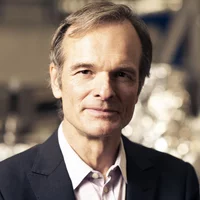| Project | Description |
|---|---|
| ERC Synergy project HERO |
Fuelling the next quantum revolution with the research project HERO An ERC Grant is the most prestigious award for excellent European research projects. A team with three researchers from the ETH Domain had also applied for such a grant. Today, Gabriel Aeppli from the Paul Scherrer Institute PSI, Henrik Rønnow from the Swiss Federal Institute of Technology Lausanne EPFL and Nicola Spaldin from ETH Zurich, together with their colleague Alexander Balatsky from Nordita, Stockholm University, received the contract signed by the EU confirming the extraordinary 14 million euro funding. With this funding, they will join their expertise to look into the heart of materials. Using the large research facilities at PSI, they plan to uncover new quantum effects which up to now have been overlooked or could not be seen by previously employed methods. They will also design new materials with useful quantum properties. Such new properties could be of use for data processing or data storage in the future and thus become the backbone of future electronics for the benefit of our Society. |
| SLS 2.0 | The Swiss Light Source (SLS) has been operational now for nearly two decades. In this period, it has spearheaded groundbreaking research in biomedicine, engineering and the natural sciences, thanks in large part to the excellent performance of the underpinning electron accelerator and storage ring complex. In addition, it has led the world in industrial exploitation, particularly by the pharmaceutical sector, and spawned numerous new companies, including one of the most successful Swiss technology spinoffs, Dectris. For much of this time, the SLS was a benchmark with regards to how closely its performance matched the theoretical limits defined by its machine parameters. However, with the advent of the next generation of synchrotron light sources, called diffraction-limited storage-rings, that yield an emittance and brightness improved by up to two orders of magnitude, it has become imperative to upgrade the SLS (called SLS 2.0) in like manner. It is planned to upgrade the machine in 2023/2024 with a planned improvement in performance of a factor of 40, and return to regular user operation in 2025. |

